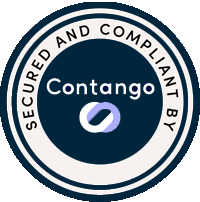
Aug 19
In today’s fast-paced business environment, companies often undergo rebranding or end marketing campaigns, leaving them with obsolete branded materials. These items, if not managed properly, contribute to environmental waste. This document outlines a sustainable transition framework for responsibly handling brand collateral, ensuring minimal environmental impact and maximizing social benefits.

The Problem
1. Waste from Obsolete Merchandise
When companies rebrand, go through mergers or acquisitions or shift their marketing strategies, they often have stored at their offices or in warehouses an excess quantity of outdated branded merchandise. The easiest solution is often disposal in landfills, leading to unnecessary waste and environmental harm.
2. Missed Opportunities for Charitable Contributions
Although donating these items to charitable organizations is a viable alternative, many companies face logistical challenges. Brand marketing teams may lack the time and resources to coordinate these efforts, especially when items are distributed across multiple warehouses worldwide.
3. Lack of Structured Approach
Without a cohesive strategy, companies risk discarding valuable resources rather than leveraging them for social good and sustainability.
The Solution: Brand Collateral Sustainable Transition Framework
This framework provides a step-by-step approach to managing obsolete brand materials, focusing on recycling, repurposing, and donating to worthy causes.
Step 1: Nominate an Internal Champion
Objective: Designate a team member responsible for overseeing the transition process.
Role: This champion will coordinate efforts, liaise with external partners, and ensure alignment with company sustainability goals.
Step 2: Assess Your Inventory
Objective: Conduct a thorough inventory audit to identify obsolete items. Reach out to numerous teams within your organization. Every department often has its own brand collateral.
Action Items: Catalog items based on type, condition, and location. Determine the potential for recycling or donation.
Step 3: Decide What to Recycle
Objective: Identify items that are not suitable for donation and need to be recycled.
Action Items: Partner with recycling companies that specialize in textiles, electronics, or other relevant materials. Ensure compliance with environmental regulations.

Step 4: Decide What to Donate
Objective: Select items that can be repurposed or donated to charitable organizations.
Action Items: Identify suitable charitable partners and coordinate logistics for donation. Consider local and international organizations to maximize impact.
Step 5: Share Your Story
Objective: Communicate the impact of your sustainable transition efforts to stakeholders, both internally and externally.
Action Items: Develop case studies or reports showcasing your commitment to sustainability. Use social media and press releases to highlight success stories and encourage industry-wide change.

By implementing the Brand Collateral Sustainable Transition Framework, companies can transform their approach to managing obsolete materials. This structured strategy not only reduces waste but also enhances corporate social responsibility and aligns with sustainability goals. Through recycling and charitable donations, companies can make a meaningful impact on the environment and society.
Appendices
Resources for Recycling and Donation Partners







